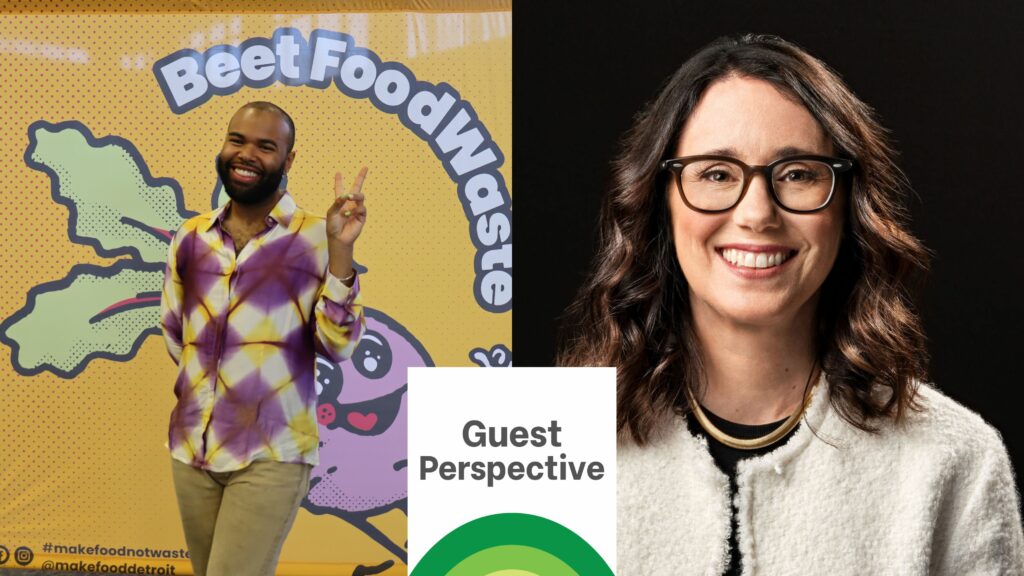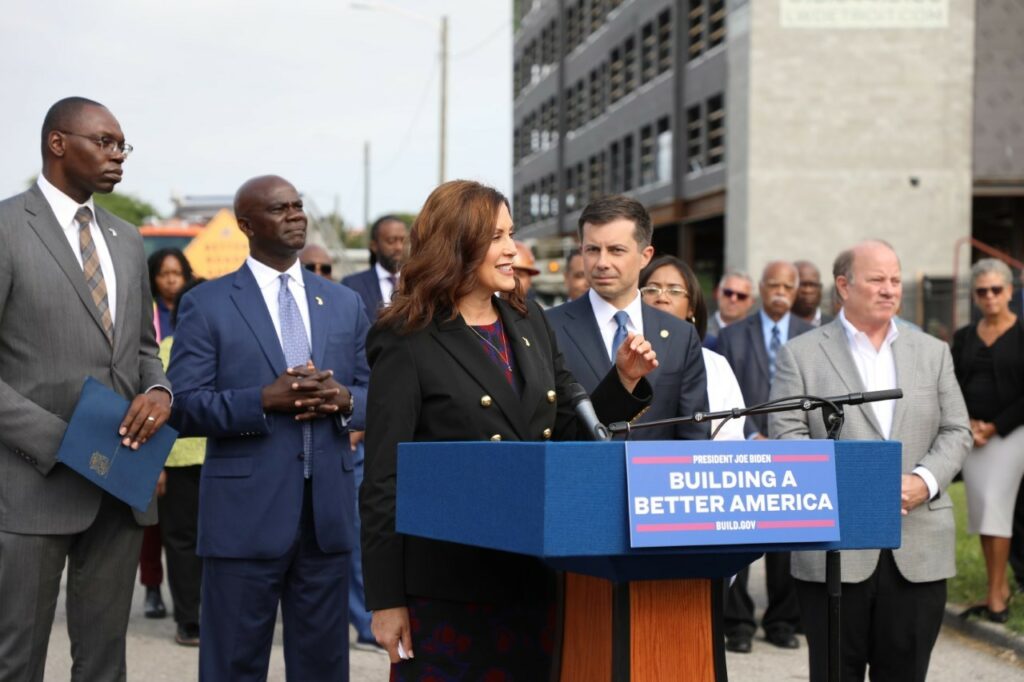Perspective on Eliminating Food Waste

DANIELLE TODD, IS THE EXECUTIVE DIRECTOR OF MAKE FOOD NOT WASTE Landfilled food is one of the primary sources of climate change due to two main reasons. First, food decomposing in landfills emits methane, a greenhouse gas 25 times more potent than carbon dioxide. Second, landfilled food represents a waste of land, water, and transportation resources that cannot be reclaimed. Given the substantial volume of food we send to landfills, methane emissions are skyrocketing and our resources are depleting at an alarming rate. Annually, Michiganders discard more than 2 billion pounds of food, resulting in approximately one-third of our landfills being composed of food waste. This excessive waste leads to the negative impacts of extreme weather such as flooding and power outages. It deteriorates air quality, threatens our food supply, and endangers vital plants and animals. Consequently, the State of Michigan, along with the U.S. government and the United Nations, has set a target to halve food waste by 2030. However, with 2 billion pounds of food still being landfilled annually, achieving this goal within six years presents a major challenge. Despite the fact that the problem is so great, eliminating food waste from our landfills is not all that difficult compared to other climate-related changes we need to make. Yes, it’s something we all must do, but it’s also something we all can do. According to the United Nations, more than half of the food waste comes from our homes. That means all of us can make a huge difference in this issue by changing how we handle food in our kitchens. For a fun way to get started, join our 7 Day Food Waste Challenge. You’ll learn the basics and begin to set up some habits that will drive down the amount of food you throw away. Of course, food waste happens outside of homes too. And if we’re going to reach the State’s goal in less than six years, we need a concerted plan. That’s why Make Food Not Waste has launched The 2030 Project, focusing on Southeast Michigan, the region with the highest population density. Concentrating efforts in this area is strategic, given that a larger population corresponds to greater amounts of waste. The project’s objective is to divert all food waste from landfills in the top 15 cities in the region. By collaborating with 17 local and national partners, Make Food Not Waste is crafting a detailed plan incorporating best practices in food waste reduction from across the country. The project’s approach underscores two critical principles: first, there is no singular solution to food waste. Second, we can only stop food waste by working together. While skeptics may argue that completely eliminating food waste from landfills is unattainable, we feel otherwise. It does not require the invention of groundbreaking technology or a defiance of natural laws. Rather, we simply need to stop throwing our food in the garbage. While establishing infrastructure, logistical frameworks, and educational programs pose challenges, they are not insurmountable. The alternative—continuing to waste our resources and make our planet hotter – is not something we can live with. Learn more at www.makefoodnotwaste.org. Be sure to subscribe to our newsletter for regular updates on sustainable business practices in and around Detroit.
Reconnecting Communities and Bringing Sustainable Infrastructure Opportunities to the Future

The conversion of I-375 into an urban boulevard is a profoundly meaningful project that will replace the divide that leveled the Black Bottom neighborhood and Paradise Valley entertainment district more than 60 years ago. Now, the Michigan Department of Transportation (MDOT) is funneling $104,657,051 from the President’s Bipartisan Infrastructure Law that passed last year to replace the one-mile-long freeway and develop a lower-speed urban boulevard with the impetus to recognize the wrongdoing of the past and get it right for the future. In this – the second of our two-part series, Jonathan Loree, MDOT senior project manager, talks about the importance of the project in terms of social and environmental justice, as well as development and infrastructure. Loree has worked for MDOT for 18 years and has been involved in the design, construction, and planning of major projects, including work as MDOT’s lead on the M-1 Rail streetcar on Woodward Avenue. He has been project manager for the I-375 Improvement Project since 2017. Q: From your perspective, what will this new boulevard bring to the area? A: I think it’s about connection. Reconnecting communities and creating new opportunities for those communities. I- 375 was built during the freeway boom and in the name of ‘urban renewal,’ and it’s just not the right infrastructure for the last mile into downtown, so it was time to look at how we can make this area more efficient and move toward a more sustainable and connected future. This is the heart of the city, and the boulevard will serve pedestrians and cyclists well, and move people around better – in ways that the freeway clearly cannot accomplish. The way downtown connects to neighborhoods – both east and west, as well as north and south – will be drastically improved, and some elements of the former street grid will be redesigned back into the road network, where possible. Ultimately it will be a much more useful corridor in terms of moving people around, offering walkable options, and opening real estate for potential development. This will also eliminate some of the vehicle usage in that area and effectively replace a large concrete infrastructure with a more environmentally and community-friendly passageway. Q: What about the sustainability aspects? A: This project gives us roughly 31 acres of property beyond the roadway since we will be reducing the pavement footprint. Developing this land toward furthering the community, the economy, and social equity is absolutely the goal. And to achieve this, stakeholders, the city, and the residents are working together. There will be pockets of spaces and medians, etc., that will give us opportunities to improve the aesthetics and environment – whether that be plants and vegetation and grass or artwork or items that commemorate the past. And from a sustainability standpoint, we’ll be eliminating the bridges and reducing the amount of pavement and replacing that with a boulevard that better serves the area now and into the future. We also are implementing a new stormwater management system. Q: How will the new system help ameliorate stormwater issues? A: Clearly the recessed freeways and current stormwater systems are not built to handle the multiple 100-year storms that we are seeing. There is just no place for that much water to go within the current system. This project gives us the chance to build new infrastructure to handle it much better for the area in the future. We’ll be constructing gravity-fed pipes that will allow us to treat and release the water directly to the Detroit River. This will take the load off of the current system, which consists of two aging pump stations and outlets into the Detroit Water and Sewerage Department system. Less flow in the combined sewer system will help mitigate the overflow and flooding on the freeway and in nearby homes. Q: What are the economic factors? A: This is a very valuable piece of property close to downtown, and it’s a high-traffic area with a lot of potential for development and new businesses. We’ll also be putting people to work and looking for minority contractors to work on the project. The connectivity between neighborhoods means more people on foot and on bicycles to walk into stores and restaurants and bars and improve business in those areas. Q: Speaking of putting people to work, this project will involve workforce development, correct? A: Yes. We want this property to provide long-term benefits and we are looking at leveraging the project and the outcomes toward that. This includes workforce development, providing more opportunities to disadvantaged businesses, entrepreneurs and small business enterprises and more. Construction begins in 2025 and we are currently looking at how best to engage and get people involved in trades and training people to participate. Q: Is this a unique project for MDOT? A: Absolutely. We are embarking on a design and construction project to acknowledge mistakes made in the past and create better infrastructure for the future. Not only for the corridor but for the city and state and for the people. Honoring the past and building an environment that facilitates live, work, and play for now and into the future is important and necessary. Q: What about planning for future connectivity and technology? A: There is a lot of talk about autonomous vehicles and interest in how transit will play into this and what that looks like for the future. We will develop this infrastructure to support and facilitate flexibility for the future to the best of our ability and knowledge now. Be sure to subscribe to our newsletter for regular updates on sustainable business practices in and around Detroit.


